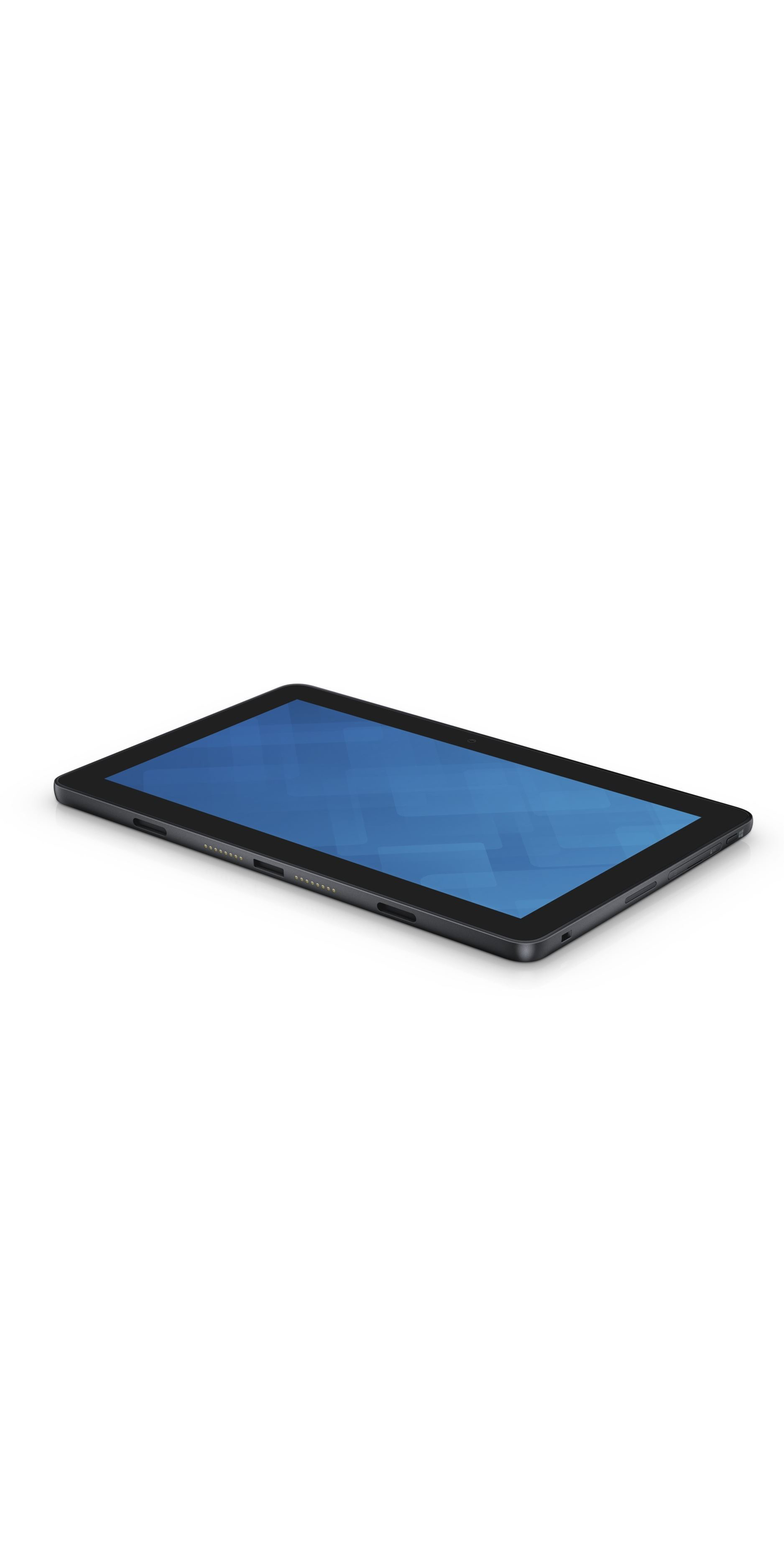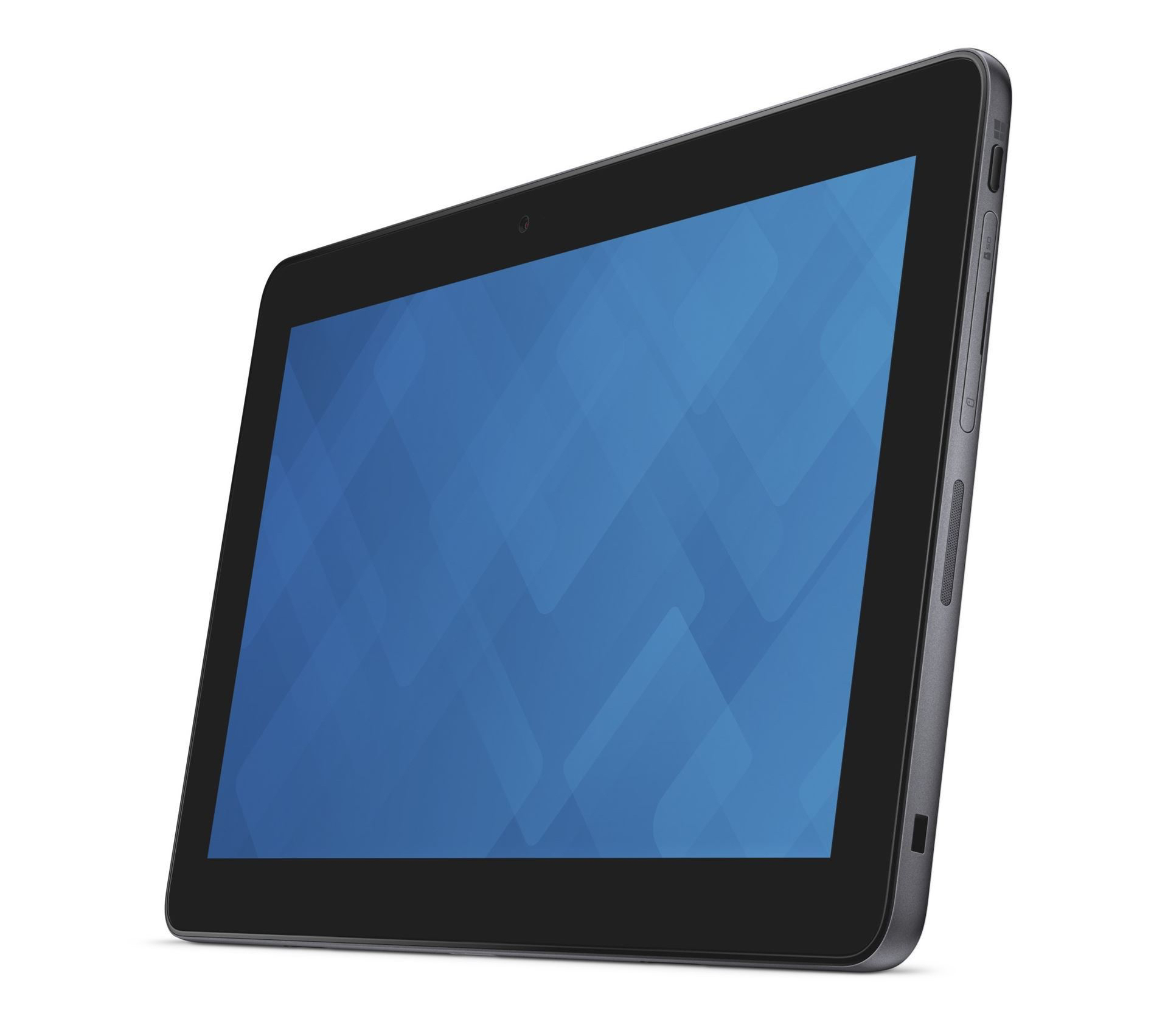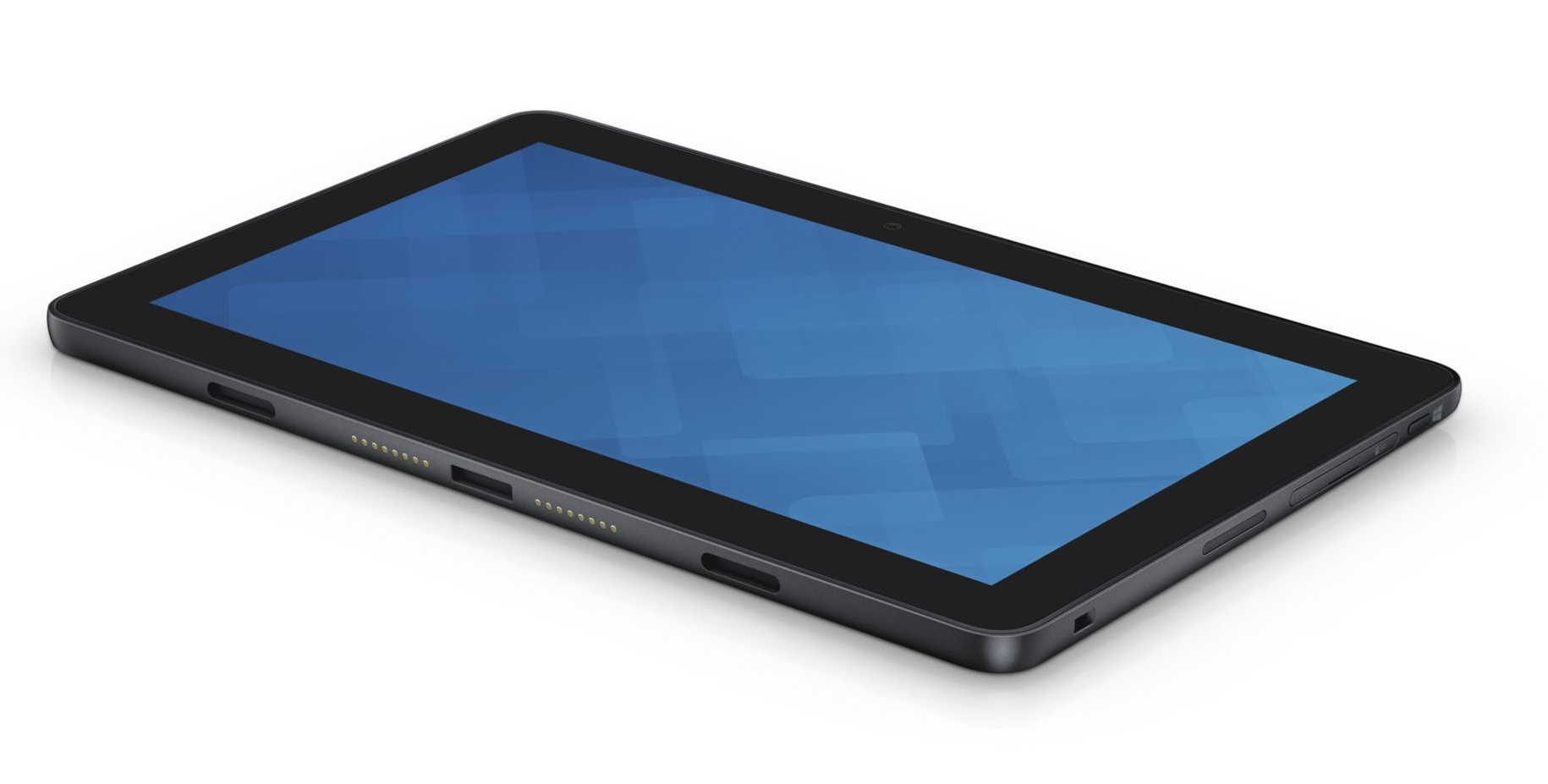Dell Latitude 11 review
Dell's tablet is a plain product for a premium price

This Dell tablet is functional enough for day-to-day use, but it's not designed well enough to justify its high price. If you're sure you want a Windows slate, then there are likely better value alternatives.
-
+
Versatile selection of ports and slots; Easily serviceable
-
-
Overpriced for what it is; Comparatively heavy and bulky

The Dell Latitude 11 is a Windows 10 tablet that's trying to have its cake and eat it too. It wants to be powerful and versatile enough to replace your laptop - at least in certain circumstances - but it's also trying to maintain the portability and ease of use of tablet computing.
Casing
The Latitude 11 looks boxy and workmanlike. The casing is made of plain and unassuming matte-black plastic, but somehow still manages to pick up a surprising amount of grubby fingerprints.
It's also uncomfortably thick and heavy. It's over 10mm thick, and weighs just over 700g. This may not sound like much, but holding it one-handed for any length of time quickly becomes tiring, and even holding it two-handed isn't particularly comfortable.
Display
The Latitude 11 has a 10.8in display with a 1080p resolution. It performs fine for normal tasks such as document editing or reading emails, but it does have a problem with brightness. You'll find using the Latitude 11 outside difficult, even when under cloud cover with the screen set to the maximum brightness setting.
Otherwise, it's perfectly adequate, with good contrast ensuring that text is crisp and clear. It's also got large bezels around the screen, so you won't accidentally tap on-screen controls while holding it.

Performance
The Latitude 11's performance is something of a mixed bag. It's powered by an Intel Core M5-6Y57 processor and 8GB of RAM. This allocation of memory is more than what you'd find in many laptops.
Multitasking worked fine, with the Latitude 11 quickly flicking between apps with no problems. It's likely to struggle, however, when faced with particularly demanding software such as 4K video and RAW image editing tools.
Sign up today and you will receive a free copy of our Future Focus 2025 report - the leading guidance on AI, cybersecurity and other IT challenges as per 700+ senior executives
Our benchmarks bore this out, with a distinctly middle-of-the-road score indicating that while it's great for light multitasking, any heavy lifting will be beyond it. That's not a critical failing for a tablet that's more likely to be used for data entry in the field, point of sale systems, controlling and updating embedded devices and other niche business use cases rather than as a full-fledged replacement for a workstation laptop.
A 256GB SATA3 SSD, with a M.2 form factor, is built into the Latitude 11. Although far faster than any hard disk, it's a shame it's not an even faster NVMe PCI-based SSD. At least you can remove the back panel and upgrade it with a larger capacity model if you wish.

Ports and accessories
Part of the reason for the Latitude 11's bulk is that it packs in a plentiful number of ports and connections. In addition to a full-size USB 3.0 Type-A port, it also has a USB Type-C connector. This is used for charging, but it can also be used for data transfer, video out and peripheral connections due to the Type-C standard's multifunctional nature.
This can be a pain on other devices as it often necessitates having to buy new peripherals, cables and adapters straight out of the gate. In this case, however, the fact that it's accompanied by 'standard' Type-A USB and micro HDMI ports, as well as a micro SD slot, means that you can transition over more slowly.
You also have the option of docking it with accessories such as a keyboard or desktop dock for more functionality, but these are sold separately.
Conclusions
While the Dell Latitude 11 is a perfectly serviceable tablet, it doesn't really excel in any area. Performance is capable, but not blazing. The screen is bright, clear and sharp, but doesn't fare well outdoors. It has plenty of ports and is somewhat upgradeable, but the trade-off is increased weight and thickness.
The problem is that for the more powerful configurations, including the Core m5 variant reviewed here, Dell charges in excess of 1,000 ex VAT - for the same price, you could get a Surface 3 or Core i5 Surface Pro 4.
Of course, if you're a large enterprise with an existing IT infrastructure that favours Dell products - such as service contracts and docking stations - you might be tempted to stick with the Latitude 11 based on backwards compatibility alone.
However, this tablet does feel rather overpriced for what it is, and anyone considering a deployment would be advised to shop around and consider their options.
Verdict
This Dell tablet is functional enough for day-to-day use, but it's not designed well enough to justify its high price. If you're sure you want a Windows slate, then there are likely better value alternatives.
| Processor | Dual-core 1.1GHz, Intel Core m5-6Y57 |
| RAM | 8GB |
| Dimensions | 14.32 x 279.8 x 176.8mm |
| Weight | 0.76Kg |
| Screen size | 10.8in |
| Screen resolution | 1,920x1,080 |
| Graphics adaptor | Intel HD Graphics 515 |
| Total storage | 256GB SSD |
| Operating system | Windows 10 Pro |
| Parts and labour warranty | Three year RTB |
| Details | www.dell.com/uk |
Adam Shepherd has been a technology journalist since 2015, covering everything from cloud storage and security, to smartphones and servers. Over the course of his career, he’s seen the spread of 5G, the growing ubiquity of wireless devices, and the start of the connected revolution. He’s also been to more trade shows and technology conferences than he cares to count.
Adam is an avid follower of the latest hardware innovations, and he is never happier than when tinkering with complex network configurations, or exploring a new Linux distro. He was also previously a co-host on the ITPro Podcast, where he was often found ranting about his love of strange gadgets, his disdain for Windows Mobile, and everything in between.
You can find Adam tweeting about enterprise technology (or more often bad jokes) @AdamShepherUK.
-
 Trump's AI executive order could leave US in a 'regulatory vacuum'
Trump's AI executive order could leave US in a 'regulatory vacuum'News Citing a "patchwork of 50 different regulatory regimes" and "ideological bias", President Trump wants rules to be set at a federal level
By Emma Woollacott Published
-
 Microsoft Excel is still alive and kicking at 40 – and it's surging in popularity as 82% of finance professionals report ‘emotional attachment’ to the spreadsheet software
Microsoft Excel is still alive and kicking at 40 – and it's surging in popularity as 82% of finance professionals report ‘emotional attachment’ to the spreadsheet softwareNews A recent survey found Gen Z and Millennial finance professionals have a strong “emotional attachment” to Microsoft Excel
By Emma Woollacott Published
-
 LastPass hit with ICO fine after 2022 data breach exposed 1.6 million users – here’s how the incident unfolded
LastPass hit with ICO fine after 2022 data breach exposed 1.6 million users – here’s how the incident unfoldedNews The impact of the LastPass breach was felt by customers as late as December 2024
By Emma Woollacott Published
